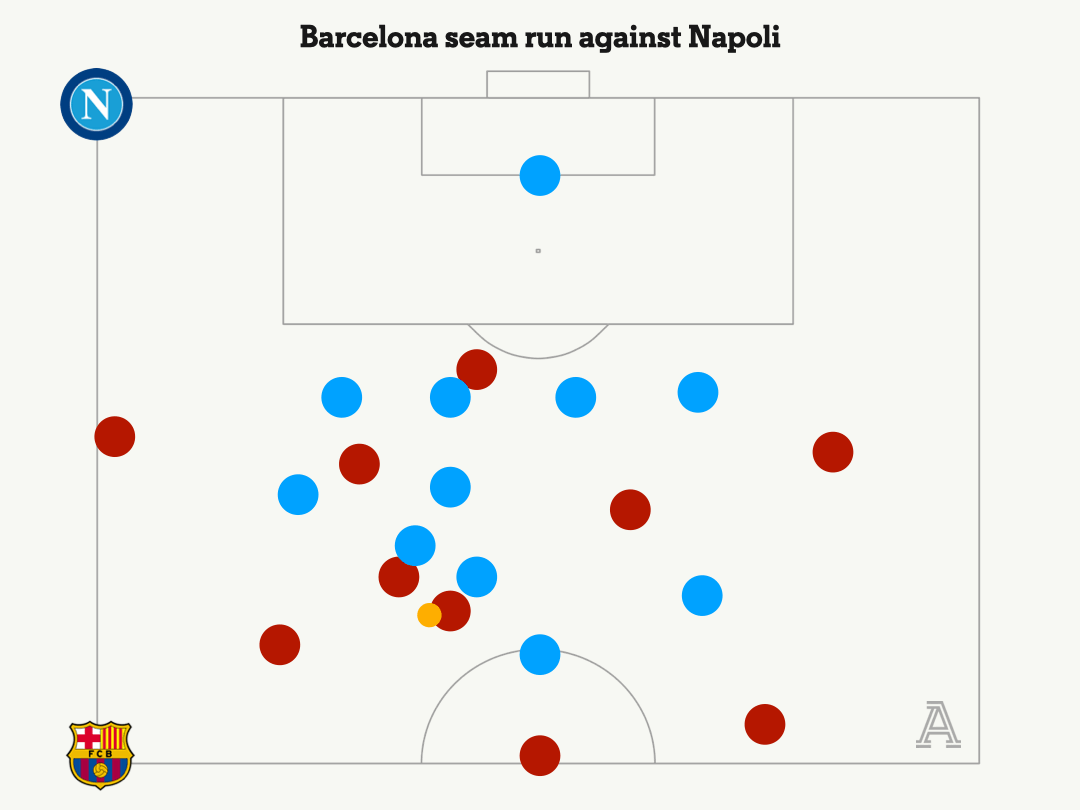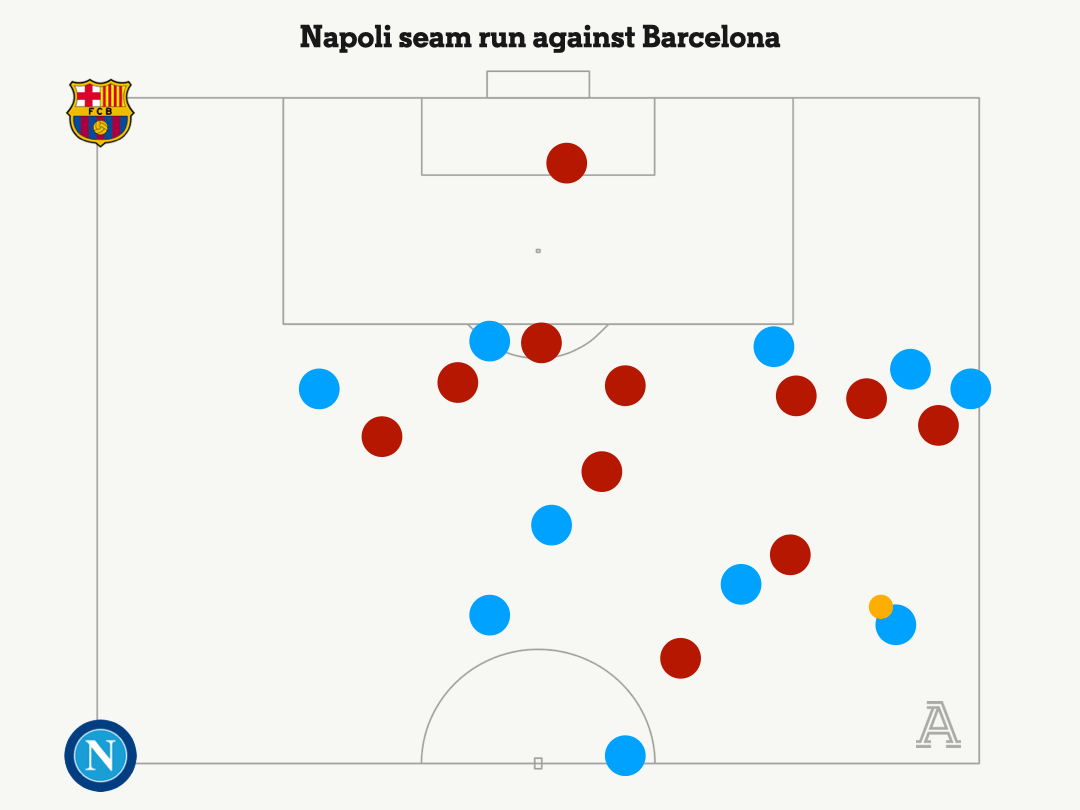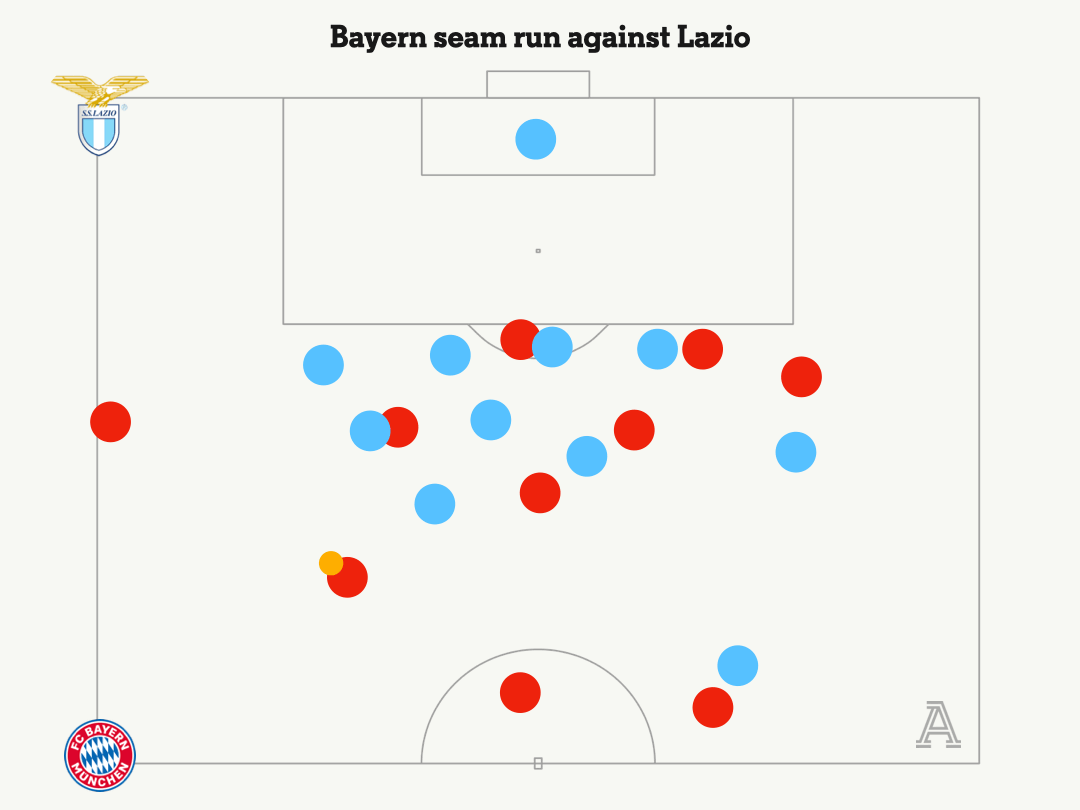This is part of the How Football Works series, a piece-by-piece look at the mechanics of the game
One good thing to do if you’re trying to score a goal is to receive a pass behind the defensive line. Normally this is hard because defenders like to stand close together in front of the box and will follow you if you run behind them, demonstrating very little regard for your personal space. Rude of them, frankly.
Every once in a while, though, the back line gets stretched apart. If a winger receives the ball on the sideline, the opposing full-back will sigh and bid a tearful farewell to his friends and begin the long journey out to the wing. He goes alone. Now it’s easy for an attacker to run behind the back line, because a hole has appeared between the full-back on the wing and his buddies back at the top of the box. It’s as though someone grabbed the defensive fabric at both ends and ripped it open at the seam.
Slipping through that hole behind the full-back for a ball up the wing is sometimes called a “seam run”, and it’s a basic building block of a lot of attacking tactics. You’ve watched Pep Guardiola’s Manchester City make these runs for years. A lot of positional sides do it reflexively almost every time the ball goes wide. Just last week, in the Champions League, Barcelona scored off a seam run and then Napoli scored a mirror-image goal against them from another.
Once you start to notice this pattern, it can feel like every football match is practically bursting at the seams.
The reason coaches love seam runs so much is that even though there are four pretty straightforward ways to stop them, each creates its own problems for the defence.
The most common way to defend a seam run is for the nearest midfielder — who’s typically already keeping tabs on the inside attacker who makes the run — to follow the runner into the gap. The full-back can’t give chase because he’s already squared up out wide against the player on the ball. The nearest centre-back could slide out to pursue the runner but that would leave a dangerous opening in front of goal. It falls to the wide midfielder, then, to drop in and become an extra defender.
The challenge is recognition and timing. Since the marker is starting from the second line of defence, they can’t always watch the run developing in front of them and know exactly when to turn and give chase. It’s pretty easy for the runner to sneak behind them and get a head start into the seam, earning that extra split second he’ll need to get around the ball and put in a cross before the marker can catch up.
That was the key to Barcelona’s goal against Napoli. When the centre-back Pau Cubarsi slid a pass out to Joao Cancelo on the left wing, Raphinha saw his cue and took off on a seam run. Matteo Politano recognized the pattern, too, and instinctively started jogging to seal the gap at the same moment — but he was on the wrong side of the runner and by the time he looked back to see if Raphinha was making the seam run, it was too late to turn on the jets and catch up.

Instead of giving chase, a second option for defending seam runs is for the back line to step up and catch the runner offside. That’s a risky manoeuvre so close to your own goal — if the pass comes off or the winger decides to dribble past his marker instead, the attack will not only be in behind but they’ll catch the defence moving the wrong way. If you’re going to try this, in other words, all four or five defenders had better nail the execution.
Barcelona very much did not nail the offside trap when Napoli responded with a seam-run goal of their own. In fact, only Cubarsi seemed to realise that’s what they were trying to do.

If Ronald Araujo and Jules Kounde had stepped up behind Cubarsi, Politano’s seam run would have been comfortably offside, but when they didn’t, Barcelona had two problems: Cancelo was a step behind the runner into the gap and the ball-side centre-back was hopelessly out of position because of his failed offside trap. Oops.
There are two more methods to seal off seam runs that aren’t quite as sensitive to defensive timing, but both create an even bigger problem: they show the attack inside.
The easiest way to cut off a seam run is for the full-back marking the player on the ball to scoot out toward the sideline and block the passing lane. The problem with this defensive angle is that it opens an inside route to goal. That may be a risk worth taking if the ball-carrier isn’t comfortable going that way — if a right-footed winger doesn’t want to expose the ball by dribbling to their left, for example — but most of the time ushering the attack toward the sideline and away from goal is Defending 101.
Alternatively, the defence can opt to slide the ball-side centre-back out to close down the seam runner instead of chasing him with a spare midfielder. This can feel natural, since a centre-back has a better view of the run and a better chance to arrive in a position to block a cross, but it’s awfully risky for a central defender to leave the striker open in front of goal just to go chase a wide runner.
Lazio committed both of these defensive sins at the same time in last week’s Champions League game against Bayern Munich.
When Raphael Guerreiro received the ball on Bayern’s left wing, Lazio’s right-back Adam Marusic approached him from underneath, at an angle that blocked off the passing lane toward Jamal Musiala’s seam run but opened a lane toward goal.
As he dribbled inside past Maruzic, Guerreiro paused and turned as though he was going to pass to Musiala anyway, which fooled the right centre-back Mario Gila into stepping out to follow the seam run. With Lazio’s full-back and centre-back out of the way, Guerreiro was free to pass directly to Harry Kane in the box and scramble the defence.

Most seam runs won’t produce a perfect cutback goal. Most won’t even receive the ball — they’re just decoys like Musiala in this sequence.
The reason teams like Bayern still make automatic seam runs every chance they get is that they pose so many high-stakes questions for the defence: should a midfielder chase the run and get dragged out of position? Should the full-back try to block the passing lane and allow a path toward goal? Should the centre-back step out to track the run or step up to try to catch it offside?
By the time the defence can come up with answers, they may already be ripped open at the seams.
Read the full article here


